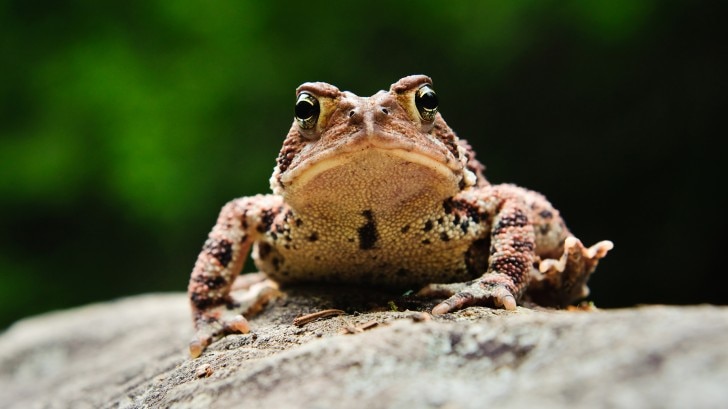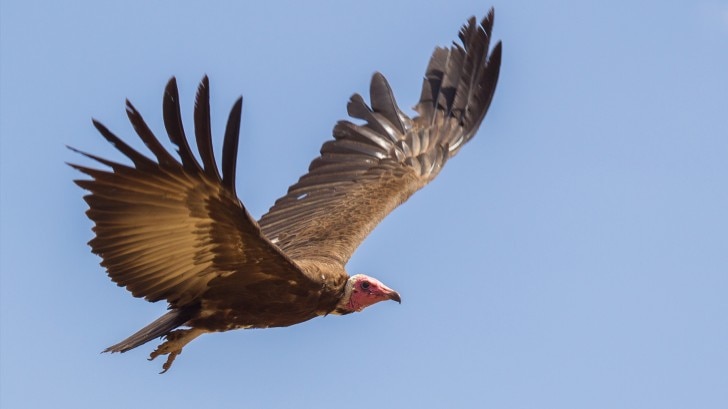BBC Earth newsletter
BBC Earth delivered direct to your inbox
Sign up to receive news, updates and exclusives from BBC Earth and related content from BBC Studios by email.
Animals
While creatures from the humble tick to the enigmatic black panther are having their moment, we take a look at three spectacular species that are overdue some good publicity.
You can’t have failed to notice that superheroes are a big deal right now and among the most popular are the characters that borrow their abilities from the animal kingdom. Your friendly neighbourhood Spiderman hasn’t entirely changed public opinion on his eight-legged namesake, but like many of our pop culture heroes he showcases some of nature’s amazing adaptations.
The toad is known for a variety of roles as a witch’s familiar, submissive mutant or petrol-headed aristocrat, but none of them do justice to the real animal’s skills.
Scientifically, there’s little to distinguish a frog from a toad, but we tend to think of toads as more terrestrial with drier skin. Toads feed on small insects so beyond a flexible tongue, they don’t have much of a predatory arsenal. Yet, when it comes to self-defence some species really pack a punch. The potency of toads is known to both traditional and modern medicine. In China, toad skin or ‘venom’ is revered for a range of properties, from anaesthetic to aphrodisiac. Many toads defend themselves by secreting toxins through their skin and specialised glands, but the cane toads (Rhinella marina) native to South and Central America (that have become invasive pests in many other locations) are particularly well known for their Bufotoxin. This milky substance is powerful enough to kill animals as big as a dog and make a human severely ill if ingested.
One of the chemicals in the potent toxic blend is related to that of Digitalis or foxglove plants, which is known to excite the heart muscle and used in small doses to treat irregular heartbeats and heart failure. Recent research from the University of Queensland, Australia, suggests positive results using cane toad venom to combat prostate cancer cells.
The toad might be unattractive but if it can take on some of our biggest killers, surely its anti-hero status is assured?

Sharks are often typecast in the media as the homicidal maniacs of the seas, but this killer perception doesn’t do justice to the amazingly diverse family of over 400 species. From gentle giant plankton feeders whale sharks to epaulette sharks that can ‘walk’ on land, each have their own unique characteristics. While there’s something a little fishy about the idea they can smell blood from a mile away, many sharks do have super senses. They are in fact some of the most sensitive animals on Earth, able to sense astonishingly weak electrical and magnetic fields.
Their specialised receptor organs are called ampullae of Lorenzini and form a network of jelly-filled pores over the sharks’ heads. This helps them hunt accurately by sensing the electrical stimuli created by their prey. For example, the hammerhead shark sweeps its wide head across the seafloor like a metal detector to find buried stingrays. Researchers at the Hawaii Institute of Marine Biology revealed that sharks can also orientate themselves to ocean currents and the Earth’s magnetic field, helping them to navigate between night-time feeding and day-time socialising sites, or follow an efficiently straight course over long migratory routes.
Sadly, some sharks share a tragic back-story because they are relatively slow to mature, live-bearing species have some of the longest gestation periods of any animals. When they are persecuted by fearful humans, poisoned by pollution, hunted for their fins, or entangled in nets as by-catch, the knock-on effect for the population is rapid decline.
Sharks are famously said to never stop moving. In truth, many species can independently pump oxygen over their gills using their cheek muscles while “obligate ram ventilators” are thought to take advantage of strong currents or highly oxygenated water to briefly stop swimming. Yet with a little artistic licence, it’s not a huge leap to translate their seeming restlessness to a dogged pursuit of justice. Rather than a man-eater, perhaps the shark could be rebranded as an eco-warrior defending our maligned marine life.

Some of the best superheroes can take to the skies so we have to include a bird on the list. Not just any bird of course, but the best symbol of avian survival: the vulture.
Vultures have a mixed reputation in pop culture. They’re often cast as malevolent antagonists but make a memorable appearance in the 1967 animated Jungle Book as protective friends of outcast Mowgli.
The birds have a host of fearsome features including sharp vision, powerful beaks, skinheads and impressive wingspans (up to 3.1m in the cinereous vulture (Aegypius monachus) of Eurasia). But it’s their feeding habits that seem to upset people the most: rather than live prey they mostly feast on the dead. Hence the lack of feathers on their head, to keep the gore from building up!
This constant exposure to pathogens requires vultures to have an impressive immune system and strong stomach acid to digest carcasses. Being covered in bacteria has its advantages, chief among them being that few other species mess with the vulture. Except, regrettably, humans.
Vulture species in Africa and Asia are suffering devastating declines, largely due to poisoning. In India and Pakistan, the use of anti-inflammatory drug diclofenac in cattle was linked to kidney failure in vultures that ate the carcasses of the treated livestock. It caused extensive population crashes, since its ban conservationists have been working hard to save the birds. In West Africa, the birds fall foul of poisoned carcasses meant to control hyena and jackal numbers. Add in collisions with power lines and wind turbines and vultures really have the odds stacked against them. Yet their position at the top of the food chain is an essential one: they swoop in to rid the land of decay and prevent the spread of deadly disease including anthrax. We should think of the vulture as a clean-up operative, doing the dirtiest of jobs to keep us safe from hazardous waste.

Featured image © Marc Guitard | Getty